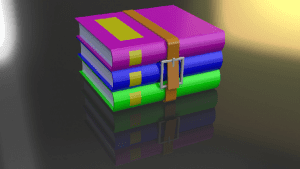In today's world, you may not find a computer user who is unfamiliar with RAR files. The RAR format has gained much popularity over the years compared to its competitor archive formats, such as ZIP and 7Zip. The reason is simple – it offers a better data compression rate compared to them, and it uses lossless compression.
RAR5 is the new RAR format that promises even better and faster compression-decompression compared to the original RAR4 format. Not only does it offer enhanced compression, but RAR5 also comes with additional features that make it stand out from its predecessor.

Why RAR5 over RAR4?
- Compression Dictionary Size: One of the significant improvements in RAR5 is the increase in the default compression dictionary size. In RAR4, the default dictionary size was 32MB, but with RAR5, it has been expanded to 1GB for 64-bit systems. This enhancement provides greater compression capabilities, especially for larger files.
- Recovery Log: RAR5 introduces a new recovery log feature. With a log size equal to or greater than 5% of the file, RAR5 is much more damage resistant than RAR4. It’ll be valid even if the file becomes corrupted.
- Damaged Archive Recovery: RAR5 offers better-damaged archive recovery compared to previous RAR formats. This improvement comes from utilizing a more advanced file table, which allows for quick browsing of the archive. Moreover, RAR5 comes with multicore decompression support, further enhancing the recovery process. If your RAR file is corrupt, look for only reliable RAR Repair tools like Remo Repair RAR to fix corrupt or damaged files with simple clicks.
- Encryption Algorithm: RAR5 uses a solid 256-bit AES encryption algorithm, which is an improvement over the solid 128-bit AES encryption algorithm used in RAR4. This enhancement makes RAR5 more secure against potential attacks.
- Compression Ratio and Speed: Numerous tests have shown that RAR5 outperforms 7-zip in terms of both compression speed and ratio, even though 7-zip is considered one of the fastest compression techniques available. RAR5's improved compression efficiency ensures that users can enjoy faster compression and decompression times.
- Incompatibility Issues: One potential limitation of the RAR5 format is its incompatibility with older decompression software. To open files compressed with the RAR5 algorithm, users will require WinRAR5. Attempts to open RAR5 compressed files with popular decompressors other than WinRAR5 have been unsuccessful.
Note: check out this article to learn how to open RAR files on your Windows 11/10.
Final Verdict:
If you're looking for a compression format that offers better performance and more advanced features, RAR5 is undoubtedly worth considering.
One thought on “Differences between RAR4 and RAR5 Compression”
Comments are closed.
I will give you real example of files compressed by RAR and RAR4 (using WinRar v6.x) for better understanding.
First, I have 27 files for which is have size 154 MB (161,787,083 bytes), then I compress them in two way methods.
Second, the result is :
RAR ==> 150 MB (157,841,727 bytes) and
RAR4 ==> 150 MB (157,978,624 bytes)
::eof::